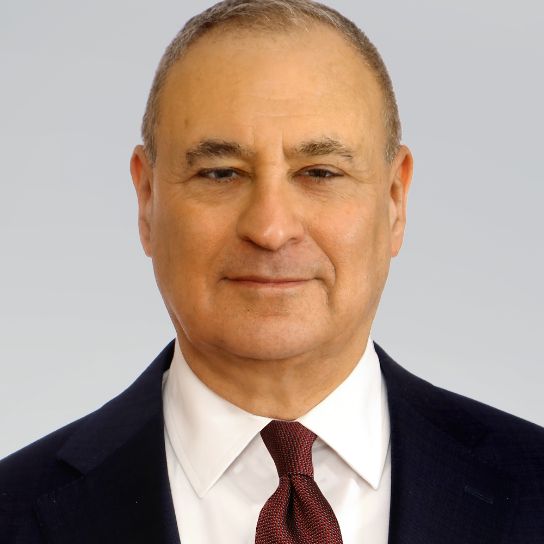With the tainted interest rate benchmark almost consigned to history, the US tackles litigation and continuity risks in legacy contracts
Introduction
On 15 March 2022, President Biden signed off the Adjustable Interest Rate (LIBOR) Act (the LIBOR Act). The long-awaited federal law tackles the disruption of contractual continuity and litigation risk posed by financial instruments that incorporated US dollar LIBOR for interest payments but lacked a fallback to replace the benchmark in the event of its cessation.
These contracts will now be amended to replace LIBOR benchmarks with a rate based on the Secured Overnight Financing Rate (SOFR). This is unless an eligible person under the contract designated another benchmark for the contract or it has been amended by the parties.
The federal law – part of the Consolidated Appropriations Act 2022 – fills a void that until recently had been only partially addressed by state laws aimed at solving the same problem and will decrease risks of default and litigation. The law directs the board of governors of the Federal Reserve to issue regulations to carry out its mandate within 180 days.
Background
LIBOR (standing for the London Interbank Offered Rate) is the reference rate of interest for a vast number of financial contracts including cash products, loans, debt securities and derivatives transactions. It is an interest rate which is calculated using data from various banks active the London financial markets and represents a rate at which those banks are prepared to lend to one another.
Long the pre-eminent global interest-rate benchmark, LIBOR was discontinued as of 31 December 2021 in nearly all currencies and maturities, following a series of market-rigging scandals. And although regulators granted US dollar LIBOR in several tenors a temporary reprieve, it too is scheduled to end after 30 June 2023. The transition from LIBOR to risk-free rates such as SOFR for US dollars and the Sterling Overnight Interbank Average for UK sterling has largely been successful.
However, legislators and regulators are concerned about litigation risks and disruption to contractual continuity. Many legacy contracts and financial instruments incorporate LIBOR but lack provisions to replace the benchmark with a different rate. Some contain no fallback in the event LIBOR is discontinued, while others contain unworkable fallbacks, such as a provision for a LIBOR-like polling of reference banks for their cost of funds.
Meanwhile, others contain fail-safes that could dramatically alter the economics of a transaction, such as reverting to the last available LIBOR screen rate or last published LIBOR. Though many legacy contracts lacking practical fallbacks have been or may yet be amended through negotiations between the parties, that is not always possible.
The existence of legacy contracts after LIBOR’s expiration creates the potential for litigation and market disruption. Parties to such contracts may unwind them based upon arguments such as frustration of purpose, force majeure, impossibility or impracticability of performance. This could leave counterparties uncertain whether they are subject to binding obligations and if so, on what terms. Of course, such litigation would result in all parties bearing significant expense. Though the extension of the end-date for US dollar LIBOR in the most frequently used tenors until after 30 June 2023, reduces the scope of the problem, significant risks remain.
To mitigate those risks, several jurisdictions adopted regulatory fixes. For example, in April 2021, the New York Legislature amended the state’s General Obligations Law specifically to address the end of US dollar LIBOR. The LIBOR Act is akin to the New York law, although the latter law affects only New York law instruments.
What will the LIBOR Act change?
Starting on the relevant LIBOR replacement date (the first London banking day after 30 June 2023 for LIBOR in most tenors), the LIBOR Act automatically invalidates contractual fallback provisions that are:
- based on US dollar LIBOR; or
- involve polls, surveys and inquiries.
Where a provision has been invalidated, or where a contract subject to the law contained no fallback provision, SOFR plus a spread adjustment (reflecting the lower interest rate of overnight standards such as SOFR compared with LIBOR) automatically becomes the fallback. This is unless a determining person under the contract, such as a trustee or calculation agent, already has designated another benchmark for the contract or it has been amended by the parties.
Where LIBOR is replaced by the recommended benchmark, federal law now declares a SOFR-based rate a “commercially reasonable replacement for and a commercially substantial equivalent to LIBOR". These provisions go far to guarantee continuity of contract.
The law also expressly creates a safe harbour against litigation. If a determining person replaces LIBOR with a SOFR-based rate in the circumstances specified in the statute, that action shall not “be deemed to impair or affect the right of any person to receive a payment, or to affect the amount or timing of such payment, under any LIBOR contract". As a result, a determining person shall not be subject to any claim or cause of action arising out of the selection or use of such a replacement.
Moreover, the selection of a board-selected benchmark replacement shall not:
- discharge or excuse performance of the contract “for any reason, claim or defense”;
- justify the termination or suspension of a party’s performance;
- constitute a breach of contract; or
- void or nullify any LIBOR contract.
Because the federal law supersedes state laws previously enacted to address LIBOR cessation, it will provide consistent standards throughout the US. This will lead to greater certainty in the marketplace and reduce the risk of litigation.
This article first appeared on our Banking Litigation Notes blog
Key contacts
Legal Notice
The contents of this publication are for reference purposes only and may not be current as at the date of accessing this publication. They do not constitute legal advice and should not be relied upon as such. Specific legal advice about your specific circumstances should always be sought separately before taking any action based on this publication.
© Herbert Smith Freehills 2024



